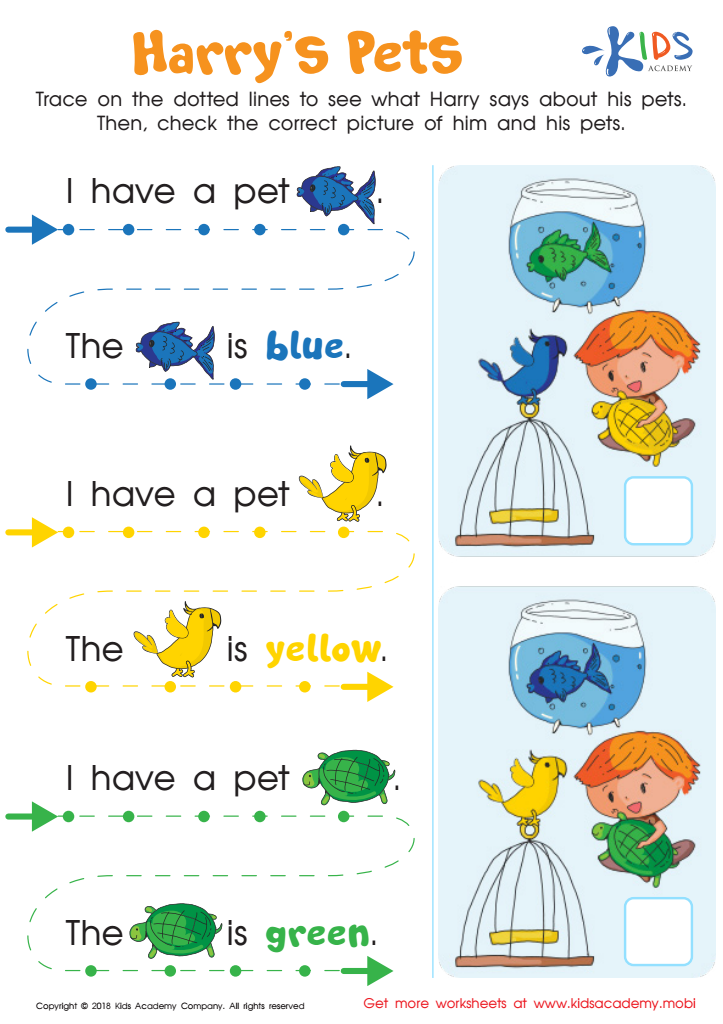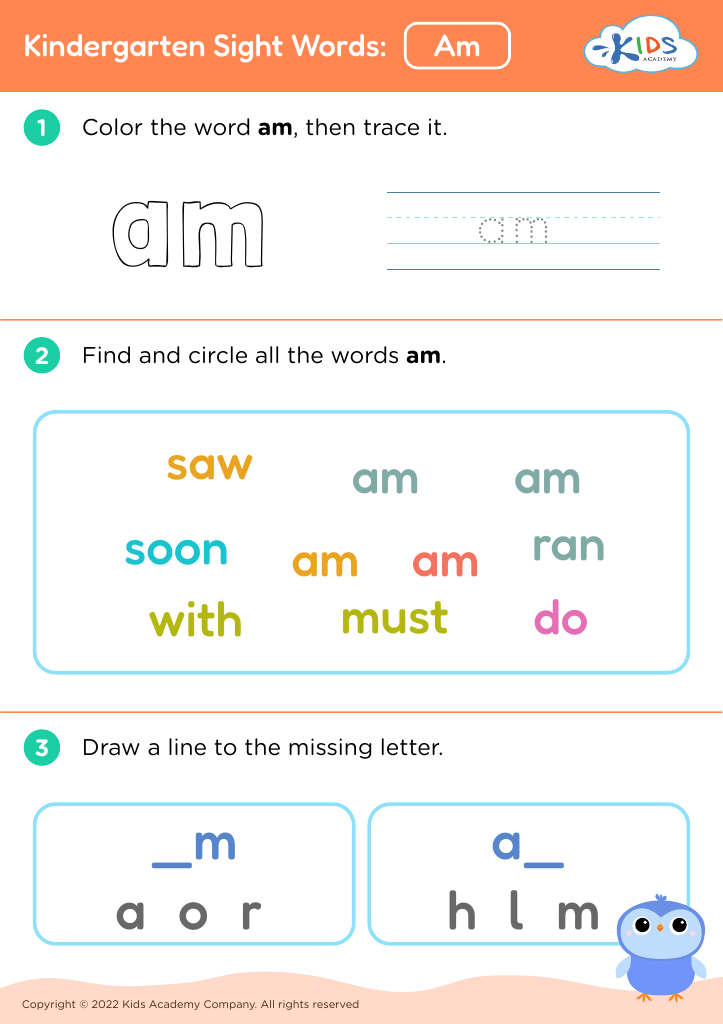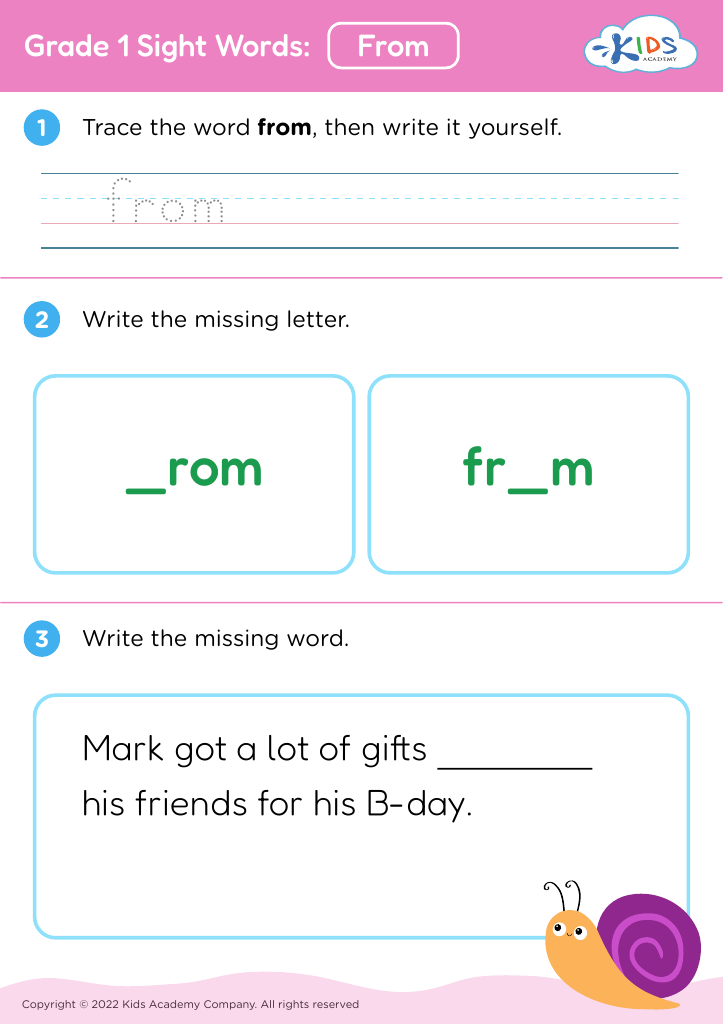Data interpretation Reading Worksheets for Ages 4-6
3 filtered results
-
From - To
Unlock your child's potential with our engaging Data Interpretation Reading Worksheets designed specifically for ages 4-6. These worksheets make learning fun by introducing young learners to essential skills such as analyzing visual data and understanding simple graphs. Using colorful illustrations and interactive activities, children will enhance their comprehension and critical thinking abilities. Ideal for home or classroom settings, our worksheets promote early literacy and foster curiosity through captivating activities that challenge their understanding of data. Explore our collection today and equip your child with foundational skills they need for academic success! Perfect for teachers and parents alike!


Read from Left to Right: Harry's Pets Worksheet
Data interpretation is a critical skill that begins to develop in early childhood, particularly for children aged 4 to 6. Parents and teachers should care about fostering these skills for several reasons.
Firstly, data interpretation helps children enhance their critical thinking and analytical abilities. As young learners start to recognize patterns, categorize information, and draw basic conclusions from data, they lay a strong foundation for future academic success in areas like math and science. Engaging in activities such as comparing sizes, identifying trends, or interpreting simple charts can make learning enjoyable and interactive.
Secondly, data interpretation is vital for everyday decision-making. Children learn to make sense of the world around them by understanding information related to their interests, such as weather charts, schedules, or favorite fruits. This practice instills a sense of curiosity and encourages them to ask questions, promoting a lifelong love of learning.
Lastly, establishing these early skills fosters collaboration and communication. When children work together to analyze information, they develop social skills and learn to respect diverse perspectives. In essence, emphasizing data interpretation at this young age equips children with essential cognitive tools and prepares them for future educational challenges and real-world applications.
 Assign to My Students
Assign to My Students


















